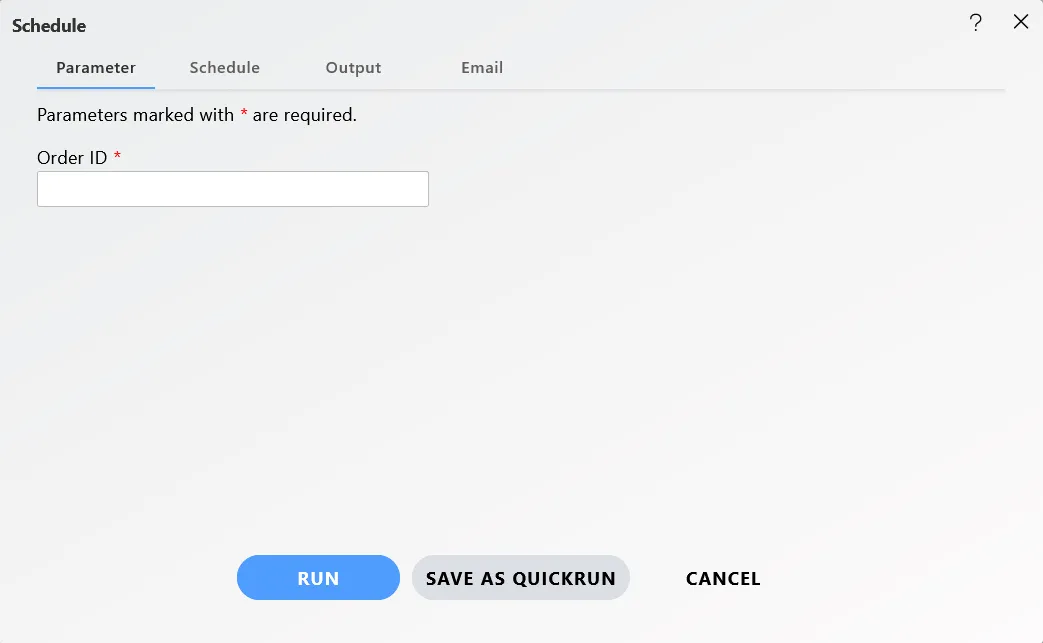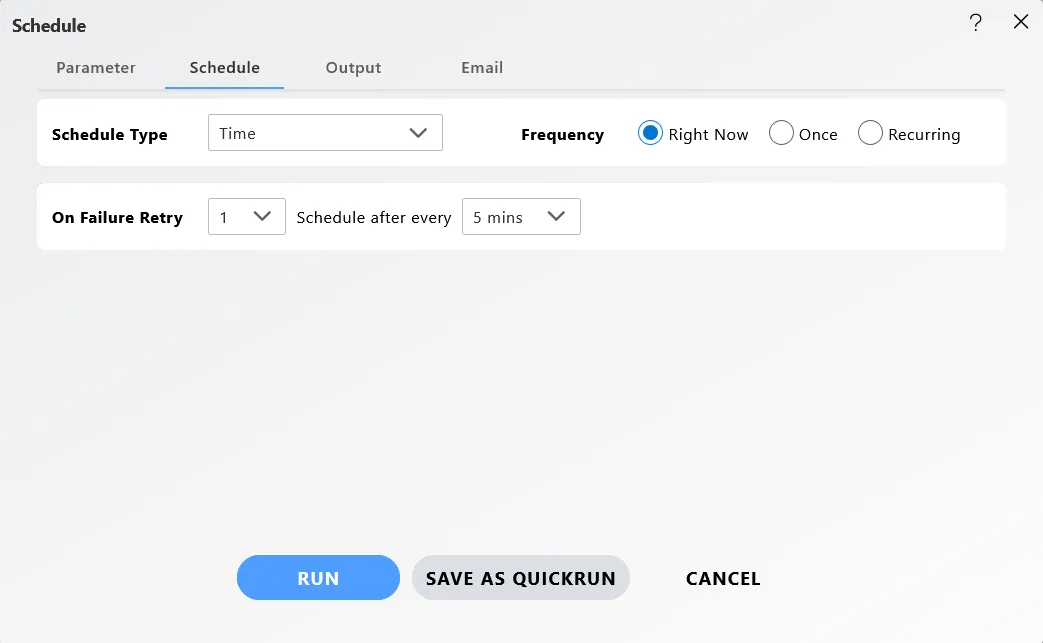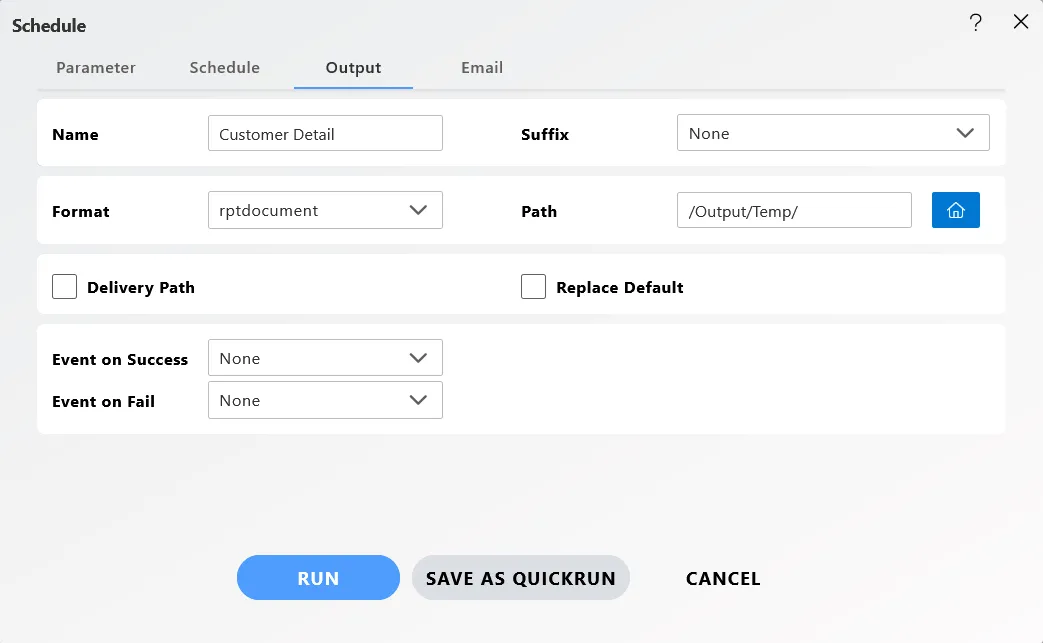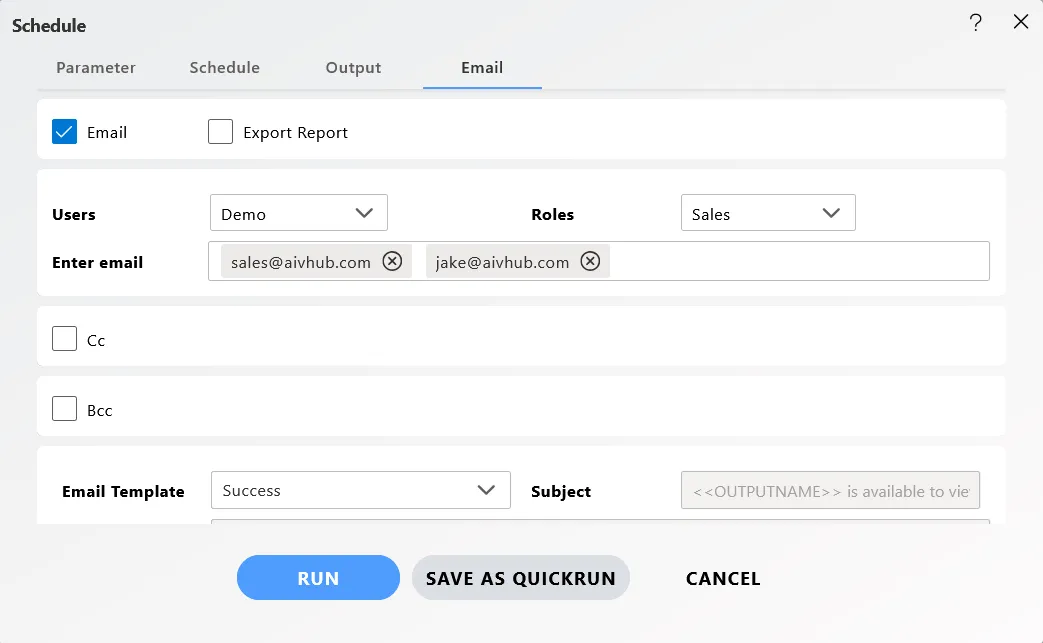Schedule Reports
Understanding Reports in AIV
Reports in AIV are comprehensive data visualizations that provide users with various perspectives on gathered information. These reports include visual elements like tables, charts, graphs, and maps, and can span one or multiple pages.
The Reports Section
The Reports Section serves as a centralized hub for all user reports, streamlining management tasks. Users can effortlessly upload, view, copy, share, delete, download, embed, and save reports as quick links.
Exploring Report Scheduling
In this session, we explore the functionality of report scheduling within AIV.
Report scheduling is a pivotal feature designed for efficient report management. Users can schedule reports at various intervals, including hourly, daily, weekly, monthly, and yearly.
File Formats and Sharing Options
Users can work with a variety of file formats such as rpt documents, Excel files (xlsx), HTML, PDF, PowerPoint presentations (PPTX), and AIV-specific formats like aiv_xlsx and qrun files.
For seamless sharing, reports can be distributed using the built-in email function or shared within AIV with other users.
Schedule Properties
Parameter: The parameter tab displays the parameters included in the report. Users may find one or more parameters that act as filters, allowing them to extract the specific data needed for the report output.

Schedule: The schedule tab enables users to easily schedule reports using various schedule types, including “Right Now,” “Once,” “Recurring,” and “Event-Based.”

Output: In the output tab, users can specify the name of the output file, add a suffix to indicate the exact time of output generation, choose the output format, and define the storage path for the generated file.

Email: The email feature allows users to send the report via email along with the scheduled delivery. Users can select the email templates like Default and Success during the email setup.

Types of Report Scheduling
1️⃣ Time Schedule 🕙
Time Scheduling involves strategically planning activities to achieve goals and priorities within the available time frame. Scheduling can be done hourly, daily, weekly, monthly, or yearly.
For a comprehensive understanding of Time Scheduling, refer to the time schedule document.
Time Scheduling involves three methods:
- Right Now: Instantly view the report output at the current moment (on-the-fly).
- Once: Schedule the report to run once at a specific time on the designated day.
- Recurring: Set up the report to run multiple times within an hour, day, week, month, or year.
2️⃣ Event Schedule 🔁
When users wish to schedule their reports based on specific events, event-based scheduling is relevant. This method involves executing tasks at specified times, allowing reports to be scheduled based on triggered events.
For further insights into the usage of Event Schedule, please refer to the following link: event schedule